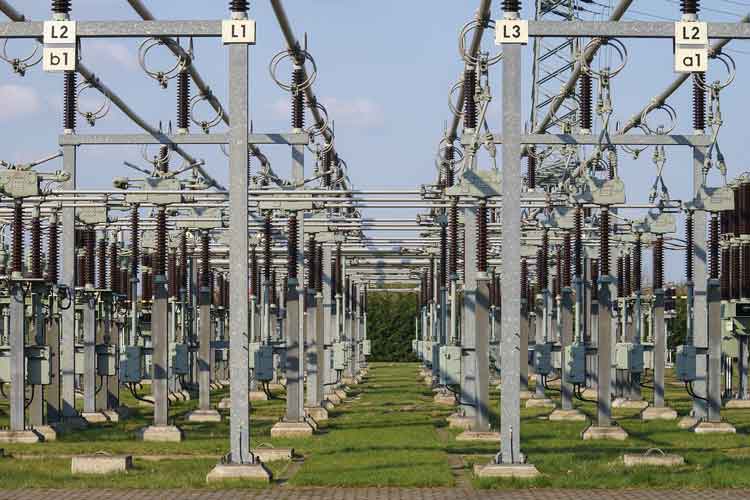Solar power is paying off
The other four are Martin's family members at the D.T. Locke Ranch near Mendota, California.
They smile because the electricity meters on the family's farm shop and main residence have not moved in seven years. Well, that is not exactly true. They've moved backward more than they have forward.
"I look at them just about every day. They are reading basically the same from when they were put in along with the solar system," said Martin. He explained that there was a whole number programmed into them initially and the number moves higher or lower based on electricity generated and electricity used. "You don't show a negative for net metering." Today, they are showing little change, although seven years of incoming and outgoing electrical use has flowed through them.
Solar powered electricity is what is making the meters stand still.
Martin's family makes up the Locke Ranch, a 1,575-acre farm near Mendota that grows 125 acres of almonds, 700 acres of alfalfa, and 750 acres of cotton.
"There are a lot of different ways to address the challenges of preserving the family farm," Martin told an audience at an irrigation seminar at World Ag Expo.
Martin said you either cut costs or improve efficiency or both in the case of the Locke family. They have cut costs by utilizing minimum tillage for 16 years; practicing IPM to reduce pesticide use, and invested in equipment to improve efficiency.
One of the most troubling costs to control for the Locke family is electricity. High costs and rolling blackouts convinced the family to look at finding a new, reliable and cost effective source of electricity.
It was solar. D.T. Locke Ranch has become the poster child for what solar can do on the farm. The family installed a solar electrical system and hooked it to a 50-horsepower irrigation pump and to the farm shop and the main ranch residence in 2002.
It did not take the family long to realize that the "real value" of going to solar is net metering, said Martin.
That is where excess electricity is put back into the electrical grid. The more that goes into the grid, the less Martin is charged for his electricity.
This is measured by digital meters, which were set on a specific number when Pacific Gas and Electric partnered with the Locke Ranch to take its solar-generated electricity. Martin said the digital meters are reading the same today as they were when they were installed on the house and shop.
Powering the irrigation pump was the primary reason the Locke family put in solar. Martin estimates 70 percent of the electricity used to power the pump comes from solar.
Water use patterns preclude the well from netting out, explained Martin.
Besides the advantage of net metering, the solar system has provided more reliable grid power, he said. "There are fewer power surges. We do not get a lot of fluctuations like we used to get in a rural power line." It also kicks in when there is full power failure, as was the case in 2004.
"The monitoring system redirected the array to the pump and it kept right on running. We did not lose (irrigation) siphon," he added.
The system, including a 108-by-30 foot solar array atop an equipment parking shed and a sophisticated converter system housed in a small building near the pump, cost a little less than $200,000. The array generates 34 kilowatts. With incentives, the system netted out at $110,000, which was financed with a five-year equipment lease. That does not include savings from equipment depreciation.
Martin said he expects the system to pay for itself fully in seven years. The solar array is expected to generate electricity for 25 years at an 85 percent efficiency level with a life expectancy of 30 to 35 years.
The system was designed and installed by WorldWater, a New Jersey corporation. It developed the AquaMax solar water pumping system used at the Locke Ranch.
He said the equipment has been reliable. The only maintenance, besides making sure the pump is at maximum efficiency, is cleaning the array. Martin does that with a high-powered water hose connected to a water truck.
The electrical monitoring and switching equipment has overheated in the wooden building where a fan has been installed. He would recommend a concrete or block building for electrical equipment.
Martin said the family likely will expand its solar energy supply. He and his wife Mari spent several days looking at solar electricity equipment at World Ag Expo.
"There are an abundance of modules available at pretty reasonable prices from a lot of companies we saw at the farm show. Solar is more competitive now with so many more panel manufacturers. And with a 30 percent rebate from the government, it is time we look at another solar project," he added.
He is looking to generate solar pumping power for the family's young almond trees, which are irrigated with micro sprinklers.
"It would seem to be a great fit with drip or micro irrigation, particularly when you think about the 25-year lifespan of the solar panels. This is about the lifespan of almond trees," he explained.
Related News

Europe Is Losing Nuclear Power Just When It Really Needs Energy
PARIS - As the Fukushima disaster unfolded in Japan in 2011, then-German Chancellor Angela Merkel made a dramatic decision that delighted her country’s anti-nuclear movement: all reactors would be ditched.
What couldn’t have been predicted was that Europe would find itself mired in one of the worst energy crises in its history. A decade later, the continent’s biggest economy has shut down almost all its capacity already. The rest will be switched off at the end of 2022 — at the worst possible time.
Wholesale power prices are more than four times what they were at the start of the coronavirus pandemic. Governments are having to take emergency action to support domestic and industrial consumers faced…





